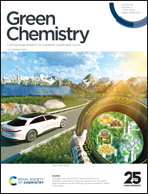An automated carcinogenic potency categorization approach for nitrosamine drug substance-related impurities†
Abstract
Assessing and mitigating the formation of nitrosamine drug substance-related impurities (NDSRIs), which are compounds that can form during certain drug manufacturing processes and have been shown to cause cancer, has become an important public health issue as evidenced by the recent guidelines from health authorities like the FDA and EMA that provide acceptable intake limits for various N-nitrosamines. We have developed a web-based application that can autonomously analyze the risk category of N-nitrosamine compounds from their SMILES notation, providing instant screening to identify high-risk formations of N-nitrosamines. The accuracy of the tool was validated using an FDA dataset of compounds with known N-nitrosamine risks, as this algorithm rapidly and accurately categorized the risks of over 6000 chemicals and comparison with the dataset labels showed high agreement, indicating that it can quickly and reliably analyze large datasets. Meanwhile, further analysis reveals that high parent amine pKaH correlates to low N-nitrosamine risk. Overall, the application integrates computational and regulatory knowledge to advance both environmental and human health priorities.



 Please wait while we load your content...
Please wait while we load your content...